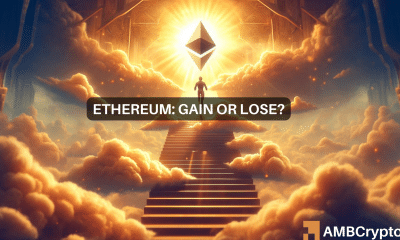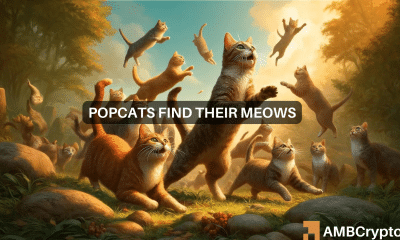PORT3 aims to be the social gateway for Web3

A relatively new term has made its way into discussions about the increasing importance of users’ identity and data demands in today’s landscape: Web3. Initially defined by Elon Musk as a “word for marketing”, it is approaching a real form available to us. But what exactly does it consist of and what is the difference from our current web2 or Web 2.0?
We can start by analyzing a few important points:
- Web 2.0 is purely social, while the third generation focuses on interconnections between online resources to bring out meaningful content and relevant resources in an intuitive way.
- Web 3.0 is decentralized, ergo not governed by a Big Tech oligopoly, and is sustained by architecture from the balanced economy.
- The new Web focuses on reaching individual users, understanding their preferences, and providing tailored experiences, reducing misinformation while still maintaining the necessary transparency.
- There is a shift from two-dimensionality to hybridity with three-dimensionality, given by virtual reality, augmented reality, and Metaverse.
- Web3 will be fully open source, meaning it will have a more transparent, accountable, and accessible architecture.
In a nutshell, “Web3 represents a revolution in the making, especially when it comes to users’ identity and data demands.” as stated by Anthony Deng, founder of Port3, an off-chain/on-chain data aggregator that is working on building the first ever Social Data Layer. Therefore, we can start to look at Web3 not as the antithesis of Web2 but more like its evolution.
It’s all about control
Web3 innovation comes at a time when different problems we have come to associate with centralized social media emerge. Data leaks, such as the one experienced by 533 million Facebook users across 106 countries, have exposed vast amounts of personal information. The leaking of full names, phone numbers, email addresses, and profile details has left users vulnerable to online and offline criminal attacks. Most people now realize that social platforms’ main activity is to harvest and sell user data to advertisers. For many, this feels like a breach of trust, as well as an unacceptable infringement of privacy.
Control of content – or, most importantly, the lack of it – is another drawback. Creators opening an account with Instagram, Facebook or Tik Tok must allow it to “use, distribute, modify, run, copy, publicly perform or display, translate and create derivative works” their content.
Blockchain-based technologies have now advanced to the point of providing viable solutions for these web2 pain points. Decentralized social media offers the chance to rethink the relationship between social networks and their users, from the ground up rather than the top down. But what does ‘decentralized ‘actually mean?
Decentralized architecture means that there is no single platform owner. This allows users to not only guide the platforms they use every day for their leisure but also to own their social communities. As you can imagine, this results in totally different dynamics. Web3’s unique ability to define and protect ownership now empowers creators to share and monetize their work as they see fit.
In this context, Port3 is providing insightful and differentiated solutions for Web3 users: explaining and enhancing the value of Social Data Oracle and social data.
PORT3 – The WEB3 Social Data Gateway
As we all know, conscientious investing is a key to maintaining this pace and quality of growth, and Port3 has taken all the right steps in this regard. After securing the first investment from the global leader in web3 infrastructure development and investment Jump Crypto, the project has just closed its first round of investment led by Kucoin.
Port3 universe has based its development and mission around three main pillars:
- Social Data Acquisition: SoGraph.xyz leverages incentives from projects to encourage users to share their identities & data. In exchange, it helps projects bootstrap traffic through SoQuest, our proprietary software built for Web3 community engagement.
- Data Aggregation: its in-house algorithm refines and standardizes user data which segments user profiles according to Preference, Value & Authenticity.
- Social Data Layer: Open and Collaborative On-chain data Oracle that is fully customizable. Tailor-made for Web2 & Web3 platforms to integrate and optimize their use of social data.
The Key to Success: Collecting and Reorganizing Social Data
What we call “Social Behavior” it’s a pretty wide concept: it includes both digital content shared by users on SNS platforms and their on-chain and off-chain actions.
People from the Web3 industry have slowly started to realize that the initial approach of abandoning Web2 platforms to shift completely to a Web3 equivalent might not be the right move. Most of the social behavior is still expressed on Web2, and there is no data on the chain that is directly available for scenarios such as NFT minting, smart airdrop, DAO governance, etc. Extensive data acquisition and accurate data analysis capability are the critical point to achieving efficient data aggregation, which is why combining the 2 sources might be the key to success.
To become the social gateway of the Web3 world, Port3 has come up with a way to aggregate and analyze on-chain and off-chain data multi-dimensionally, by building a mechanism that extracts normalized data from raw data.
The final goal is to create a decentralized Social Data Oracle based on data aggregation to provide open data layer services for various Web3 identity and asset applications and ultimately give back the data ownership to users. The Oracle concept has been central to the development of many Web3 applications – think of Chainlink for Defi – because, without reliable data from the offline world, on-chain lending and other trading scenarios could not be further achieved.
Port3’s Social Data Oracle aims to solve these three core problems:
- How the data is organized and connected.
- How the rights to the data are vested to the user.
- How to protect the user’s privacy.
The market response has been great, with the platform achieving 945k entries, 25k weekly active users, 181 campaigns, 80k web IDs, and 119 verified spaces so far. With over 151 partnerships signed in their first period of activity, Port3 was able to place itself as one of the most active Web3 projects in the industry and reach a coverage of 3.51m users on Telegram and 1.9m on Discord. The enthusiasm from the community is also reflected in the registered addresses on the platform, over 64k to this day.
Summary
The Web2 Internet is currently controlled by Big Tech companies such as Youtube, Amazon, Netflix, and Meta (Facebook): they hold the information, power, data, and therefore, profits.
With the coming of Web3, many applications have emerged in all sorts of fields: reputation systems, identity authentication, smart airdrop, community governance, DAO governance, etc. However, most of them stay small and – even if they are very innovative – play only a small role compared to their Web2 alternatives. That’s because they are not able to exploit the interconnectivity opportunities offered by Web3 technology.
Because of the massive volume of Social Data and the low value contained in Raw Data, it is essential to clean, analyze and then extract Data with higher value concentration.
Port3 has introduced an innovative solution that will revolutionize the whole industry through 3 main features:
First, various source data aggregated from multiple channels (reporting, crawling, indexing). Developers can elaborate their data models by defining the input, output, and processing algorithms, and publishing them to data markets.
The Aggregator node in the Social Data Oracle will run the algorithms defined by these models and output the results to Oracle contracts, which will be accessible directly by third-party applications.
Finally, the data models on the Data Markets can be combined and indexed in the network and form secondary aggregated data available to third parties.
We are just at the beginning of a new era, and Port3’s team is working on making sure the pillars on which we build the new Internet are stronger than ever. Together with its users and other projects in the ecosystem, it aims to create a world where all data matters and it’s easily accessible – and monetizable – by everyone.
Disclaimer: This is a paid post and should not be treated as news/advice.






